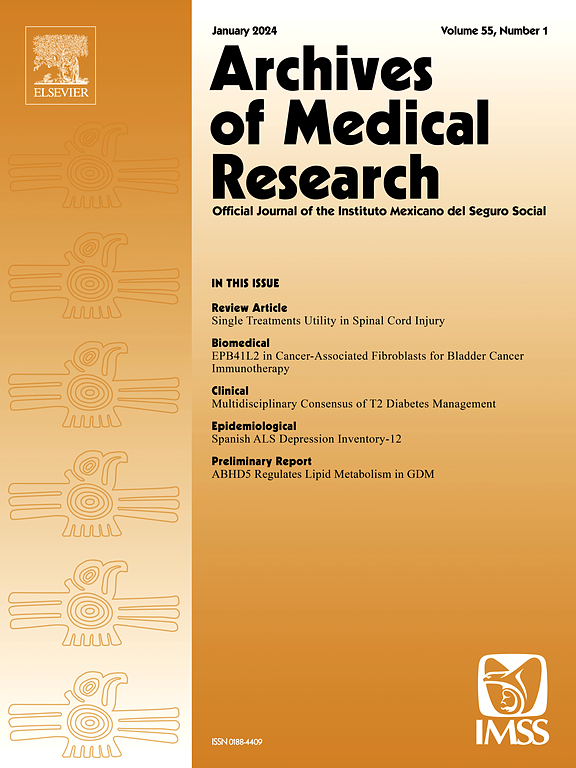孕妇双酚暴露概况及其对生殖激素和甲状腺激素的影响
IF 3.4
3区 医学
Q1 MEDICINE, RESEARCH & EXPERIMENTAL
引用次数: 0
摘要
双酚类物质是新兴的健康问题污染物。暴露于双酚类物质可能会影响激素生理,特别是在怀孕期间,当身体更容易受到干扰时。目的本研究旨在确定孕妇双酚暴露概况,并探讨这些化合物的尿水平与怀孕期间生殖激素和甲状腺激素水平中断之间的关系。方法对384例孕妇进行调查。通过问卷收集必要信息后,采集血液和尿液样本。电化学发光法检测生殖激素和甲状腺激素,液相色谱-串联质谱法检测双酚类物质。结果bpa、BPS和BPF的检出率分别为95.3、76.3和73.9%。BPA、BPS和BPF的平均肌酐浓度分别为6.689、1.135和1.013µg/g。血浆中雌二醇水平与尿液中双酚浓度之间,以及血浆中黄体酮和催乳素水平与尿液中BPA浓度之间,存在显著的正相关关系。睾酮水平的破坏与BPS浓度升高有关。此外,尿双酚浓度与甲状腺激素水平之间没有显著关联。关于暴露源,在使用假指甲和尿中高浓度BPA之间观察到显著的关联。结论双酚类物质与妊娠期某些生殖激素水平的改变有关。这些变化可能对孕产妇健康和儿童发育产生不利影响。本文章由计算机程序翻译,如有差异,请以英文原文为准。
Exposure Profiles to Bisphenols and Their Impact on Reproductive and Thyroid Hormones in Pregnant Women
Background
Bisphenols are emerging pollutants of health concern. Exposure to bisphenols may impact hormone physiology, particularly during pregnancy, when the body is more vulnerable to disruptions.
Objective
This study aimed to identify bisphenol exposure profiles in pregnant women and to explore associations between urinary levels of these compounds and disruptions in reproductive and thyroid hormone levels during pregnancy.
Methods
This study was conducted on 384 pregnant women. After gathering the necessary information through a questionnaire, blood and urine samples were collected. Reproductive and thyroid hormones were measured by electrochemiluminescence, and bisphenols were detected by Liquid-chromatography tandem mass spectrometry (LC-MS/MS).
Results
BPA, BPS, and BPF were detected in 95.3, 76.3, and 73.9% of the analyzed samples, respectively. The mean concentrations were 6.689, 1.135, and 1.013 µg/g of creatinine for BPA, BPS, and BPF, respectively. A significant positive association was found between plasma levels of estradiol and urinary concentrations of bisphenols, as well as between plasma levels of progesterone and prolactin and urinary concentrations of BPA. Disruption of testosterone levels was associated with elevated BPS concentrations. Besides, no significant association was found between urinary bisphenol concentrations and thyroid hormone levels. Regarding exposure sources, a significant association was observed between the use of fake nails and high urinary BPA concentrations.
Conclusion
In this study, bisphenols were associated with altered levels of certain reproductive hormones during pregnancy. These changes could have adverse effects on maternal health and child development.
求助全文
通过发布文献求助,成功后即可免费获取论文全文。
去求助
来源期刊

Archives of Medical Research
医学-医学:研究与实验
CiteScore
12.50
自引率
0.00%
发文量
84
审稿时长
28 days
期刊介绍:
Archives of Medical Research serves as a platform for publishing original peer-reviewed medical research, aiming to bridge gaps created by medical specialization. The journal covers three main categories - biomedical, clinical, and epidemiological contributions, along with review articles and preliminary communications. With an international scope, it presents the study of diseases from diverse perspectives, offering the medical community original investigations ranging from molecular biology to clinical epidemiology in a single publication.
 求助内容:
求助内容: 应助结果提醒方式:
应助结果提醒方式:


